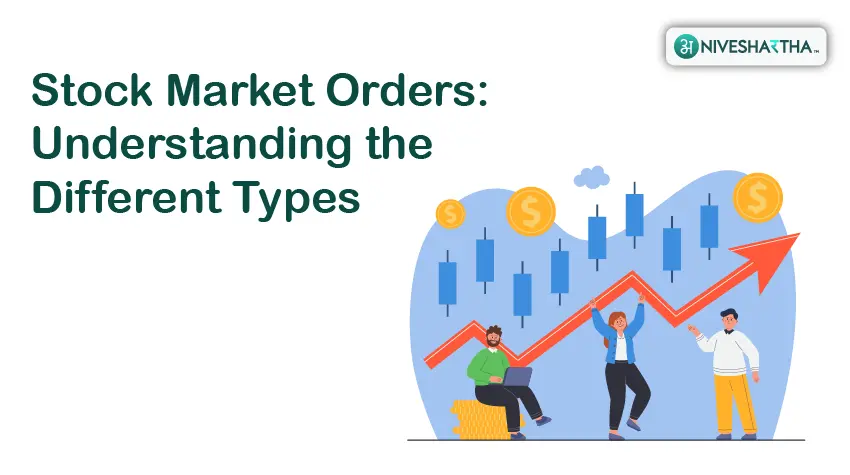
Introduction
In the world of stock trading, understanding the various types of orders is crucial for making informed investment decisions. Each order type serves a unique purpose, allowing traders to execute trades with precision and according to their specific strategies. In this blog, we'll explore the most common types of orders used in the stock market, shedding light on their functions and when to use them.
1. Market Order
A Market Order is the simplest and most straightforward type of order. When you place a Market Order, you're instructing your broker to buy or sell a stock at the current market price. This order type is executed quickly, but the final execution price may vary due to market fluctuations.
2. Limit Order
A Limit Order allows you to set a specific price at which you want to buy or sell a stock. The order will only be executed when the market reaches your specified price or better. While it provides price control, there's no guarantee of execution if the market doesn't reach your limit.
3. Stop-loss Order
A Stop-loss Order is designed to limit potential losses. When you set a stop-loss price, it becomes a market order when the stock's price reaches or falls below that level. It helps protect your investment by automatically selling the stock if it starts to decline significantly.
4. Day Order
A Day Order is valid only for the trading day on which it's placed. If the order isn't executed by the market's close, it's automatically canceled. This type of order is useful for traders who want to execute a specific trade on the same trading day.
5. Good Till Triggered (GTT) Order
A Good Till Triggered (GTT) Order allows you to set a price trigger and specify how long the order should remain active. It's only executed when the market reaches your trigger price. This order type offers flexibility for traders with specific price targets.
6. After Market Order (AMO)
An After Market Order (AMO) allows you to place orders outside of regular trading hours. It's particularly useful for traders who can't actively monitor the market during the trading session. AMOs are executed when the market opens on the next trading day.
7. Robo Order
Robo Orders are automated trading instructions provided by trading algorithms. These algorithms can be programmed to execute various strategies based on predefined criteria, providing a hands- free approach to trading.
8. Delivery (Also known as Cash & Carry or CNC)
A Delivery Order, also known as Cash & Carry or CNC (Cash and Carry), is used when you want to take delivery of the physical shares of a stock. This order type is typically used for long-term investing rather than short-term trading.
9. Immediate or Cancel (IOC) Order
An Immediate or Cancel (IOC) Order is executed instantly, but any portion of the order that can't be filled immediately is canceled. It's suitable for traders who prioritize quick execution over order completeness.
10. Margin and Intraday Orders
Margin Orders allow traders to leverage their investments by borrowing funds from their broker. This can amplify both gains and losses. Intraday Orders are those that are bought and sold within the same trading day, and they are subject to different margin requirements compared to Delivery Orders.
Conclusion
Understanding the various types of orders available in the stock market is essential for traders and investors. Each order type serves a specific purpose, allowing you to tailor your trading strategy to your goals, risk tolerance, and market conditions. By choosing the right order type, you can execute trades with precision and maximize your chances of success in the dynamic world of stock trading.
Niveshartha
Nov 09, 2023
Get in touch with us
Recent Posts
Start investing today, for a better tomorrow
If you’d like to talk to our executive kindly call us on +91 8884014014 during 9 am - 5 pm weekdays.
Start investing today, for a better tomorrow
If you’d like to talk to our executive kindly call us on +91 8884014014 during 9 am - 5 pm weekdays.